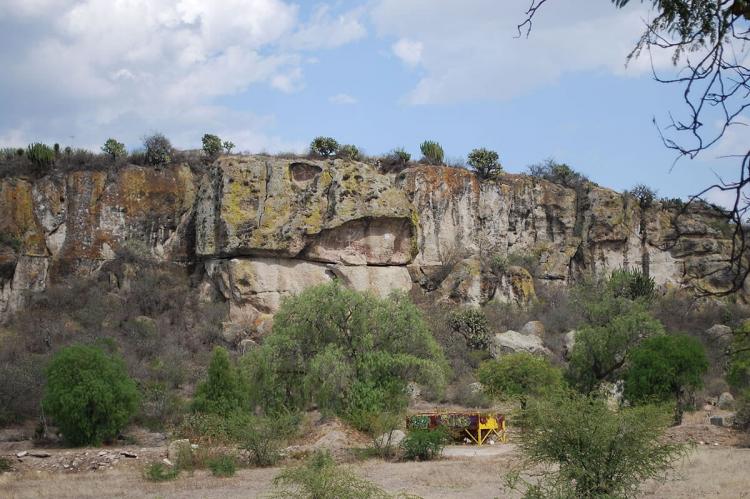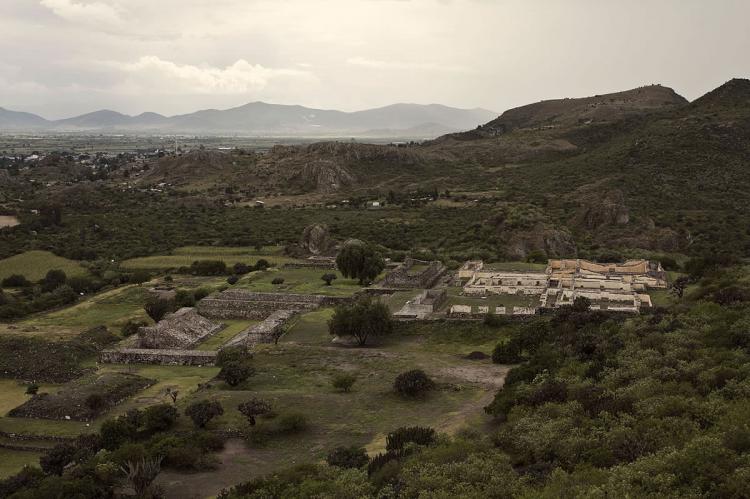Prehistoric Caves of Yagul and Mitla (Mexico)
Nestled on the northern slopes of the Tlacolula Valley in the State of Oaxaca, Mexico, the Prehistoric Caves of Yagul and Mitla, recognized by UNESCO, form an extensive cultural landscape, offering a fascinating journey into the rich history of Mesoamerica.
Prehistoric Caves of Yagul and Mitla
Nestled on the northern slopes of the Tlacolula Valley in the State of Oaxaca, Mexico, the Prehistoric Caves of Yagul and Mitla form an extensive cultural landscape, offering a fascinating journey into the rich history of Mesoamerica. This World Heritage site encompasses two pre-Hispanic archaeological complexes alongside a series of prehistoric caves and rock shelters. Amidst the subtropical central part of Oaxaca, this region unveils the profound link between human civilization and nature, tracing the roots of Mesoamerican societies and their agricultural practices.
Historical Context
The Oaxaca Valley, nestled within the Sierra Madre Mountains, served as the cradle of the Zapotec civilization, one of the earliest complex societies in Mesoamerica. Over time, it witnessed the flourishing of the Mixtec culture, marking a continuum of human development. Notable archaeological sites such as Monte Alban, Mitla, San José Mogote, and Yagul dot this valley, signifying the region's historical significance. Today, Oaxaca City, the state capital, stands at the heart of the valley, serving as a living testament to the enduring legacy of its pre-Hispanic inhabitants.
Cultural Landscape
The cultural landscape of the Prehistoric Caves of Yagul and Mitla is more than a collection of ancient artifacts; it's a narrative of the intricate relationship between humanity and nature. This connection gave birth to the domestication of plants in North America, laying the foundation for the rise of Mesoamerican civilizations. Guilá Naquitz holds particular importance among the numerous caves, as it has yielded remarkably well-preserved botanical evidence. The cave's deposits include bottle gourds, beans, squash, and, significantly, the earliest known maize cobs.
Archaeological Riches
The Yagul and Mitla complex caves, including Cueva Blanca and Gheo Shih, serve as archaeological treasure troves. They provide a glimpse into the Pleistocene era, offering evidence of extinct animals and the tools crafted by early inhabitants. These caves also unveil insights into the seasonal practices of the ancient residents, showcasing the utilization of abundant summer resources, including fruits and small mammals.
Hunter-Gatherers to Farmers
The rock shelters within this World Heritage site offer a captivating chronicle of transforming from nomadic hunter-gatherer societies to settled agricultural communities. The progression is depicted through archaeological and rock art evidence, reflecting the gradual shift from a lifestyle primarily centered on hunting to one rooted in settled agriculture. Guilá Naquitz, in particular, stands as a testament to this evolution, with ten-thousand-year-old Cucurbitaceae seeds, considered the earliest evidence of domesticated plants in the continent, and maize cob fragments, marking the initial stages of maize domestication.
Evolution in the Oaxaca Valley
The Prehistoric Caves of Yagul and Mitla are an exceptional reflection of the evolution of human societies in the Oaxaca Valley. The transition from nomadic hunter-gatherer communities to settled agricultural groups is intricately woven into the fabric of this cultural landscape. The property showcases the rich tapestry of Mesoamerican history and highlights the importance of understanding the environmental and agricultural foundations that shaped these civilizations.
Journey Through Time
In essence, the Prehistoric Caves of Yagul and Mitla beckon us to embark on a captivating journey through time. These caves and archaeological complexes narrate the story of human resilience, adaptation, and ingenuity in an ever-changing environment. As we unravel the mysteries of these caves, we gain profound insights into the origins of Mesoamerican civilizations and the pivotal role played by the Oaxaca Valley in shaping the course of human history.

